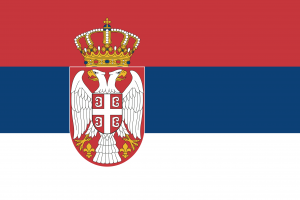Language/Serbian/Grammar/Verbs:-Past-Tense
 Հայերէն
Հայերէն Български език
Български език 官话
官话 官話
官話 Hrvatski jezik
Hrvatski jezik Český jazyk
Český jazyk Nederlands
Nederlands English
English Suomen kieli
Suomen kieli Français
Français Deutsch
Deutsch עברית
עברית हिन्दी
हिन्दी Magyar
Magyar Bahasa Indonesia
Bahasa Indonesia فارسی
فارسی Italiano
Italiano 日本語
日本語 Қазақ тілі
Қазақ тілі 한국어
한국어 Lietuvių kalba
Lietuvių kalba Νέα Ελληνικά
Νέα Ελληνικά Şimali Azərbaycanlılar
Şimali Azərbaycanlılar Język polski
Język polski Português
Português Limba Română
Limba Română Русский язык
Русский язык Español
Español العربية القياسية
العربية القياسية Svenska
Svenska Wikang Tagalog
Wikang Tagalog தமிழ்
தமிழ் ภาษาไทย
ภาษาไทย Türkçe
Türkçe Українська мова
Українська мова Urdu
Urdu Tiếng Việt
Tiếng Việt
| ◀️ Verbs: Present Tense — Previous Lesson | Next Lesson — Greetings and Introductions ▶️ |
As a Serbian language teacher with more than 20 years of experience, I know that mastering the past tense in Serbian verbs is crucial for learners. In this lesson, we will cover the rules and conjugations for the past tense in Serbian. Additionally, I will incorporate cultural information and interesting facts to illustrate the lesson.
Consider exploring these related pages after completing this lesson: Past Tense & Be Polite.
What is the past tense?
The past tense is a verb tense that is used to describe an action or event that occurred in the past. In Serbian, verbs can be divided into two groups: regular and irregular. Regular verbs in the past tense are conjugated by adding specific suffixes to the root of the verb. Irregular verbs, on the other hand, have unique forms in the past tense that need to be memorized.
Regular verbs in the past tense
To form the past tense for regular verbs, we need to use the stem of the verb and add specific suffixes depending on the gender and number of the subject. Here are the suffixes for the past tense in Serbian:
Masculine Singular
The masculine singular suffix for the past tense is -ao. For example:
| Serbian | Pronunciation | English |
|---|---|---|
| Говорио | /ɡovǒːrio/ | He spoke |
Feminine Singular
The feminine singular suffix for the past tense is -ala. For example:
| Serbian | Pronunciation | English |
|---|---|---|
| Говорила | /ɡovǒːrila/ | She spoke |
Neuter Singular and Plural
The neuter singular and plural suffix for the past tense is -lo. For example:
| Serbian | Pronunciation | English |
|---|---|---|
| Говорило | /ɡovǒːrilo/ | It spoke |
Masculine and Feminine Plural
The masculine and feminine plural suffix for the past tense is -ali. For example:
| Serbian | Pronunciation | English |
|---|---|---|
| Говорили | /ɡovǒːrili/ | They spoke (masculine or mixed group) |
| Говориле | /ɡovǒːrile/ | They spoke (feminine group) |
Irregular verbs in the past tense
Irregular verbs have unique forms in the past tense that need to be memorized. Here are some common irregular verbs and their past tense forms:
- Бити (to be):
| Serbian | Pronunciation | English |
|---|---|---|
| Био/Била | /biːo/biːla/ | Was |
- Имати (to have):
| Serbian | Pronunciation | English |
|---|---|---|
| Имао/Имала | /imǎo/imǎla/ | Had |
- Хтети (to want):
| Serbian | Pronunciation | English |
|---|---|---|
| Хтео/Хтела | /xteǒ/xtela/ | Wanted |
Tips for mastering the past tense
Learning a new tense in a foreign language can be challenging, but with dedication and practice, it can be achieved. Here are some tips to help you master the past tense in Serbian:
- Practice, practice, practice: The only way to truly grasp the past tense is by practicing different verb conjugations on a regular basis.
- Read and listen to Serbian materials: Read Serbian texts and listen to Serbian music, podcasts, and TV shows to get exposed to the language and its various usages.
- Use flashcards: Create flashcards with different verbs in the past tense and review them regularly to help reinforce your memory.
- Learn commonly used verbs: Start with commonly used verbs such as "to speak", "to eat", and "to drink" to help build your confidence and fluency.
Cultural information
The Serbian language is rich in history and culture, and the past tense is no exception. Serbian literature and poetry make use of the past tense to tell stories and describe events in the past. One of the most notable Serbian poets, Miloš Crnjanski, used the past tense eloquently in his poems to create vivid and emotional scenes. Additionally, Serbian folk songs often use the past tense to tell stories of love, loss, and heroism.
Interesting facts
Did you know that the Serbian past tense has one of the richest declension systems among the Slavic languages? With distinct genders and numbers, as well as unique forms for irregular verbs, the past tense in Serbian is a complex and fascinating linguistic system.
Conclusion
In conclusion, the past tense in Serbian verbs is an essential aspect of the language that students must master. By understanding the rules for regular and irregular verbs and by practicing on a regular basis, learners can become confident in using this tense. Cultural information and interesting facts can help to illustrate the language and make the learning process even more enjoyable.
Sources
- 86 Top Serbian Verbs: Present & Past Tense Chart
- The Past Tense In Serbian: A Detailed Overview | Belgrade ...
- THE SERBIAN PAST TENSE (PROŠLO VREME) The past tense is ...
Now that you've completed this lesson, don't stop learning! Check out these related topics: Conditional Mood & Pronouns.
Videos
Serbian Verbs for Beginners | Present, Future and Past Tense ...
Other Lessons
- Possessive Case in Serbian
- Verbs: Future Tense
- Adjectives: Comparative and Superlative
- Questions
- Be Polite
- Give your Opinion
- Past Tense
- Adjectives
- Verbs: Present Tense
- Indefinite Articles in Serbian
| ◀️ Verbs: Present Tense — Previous Lesson | Next Lesson — Greetings and Introductions ▶️ |

